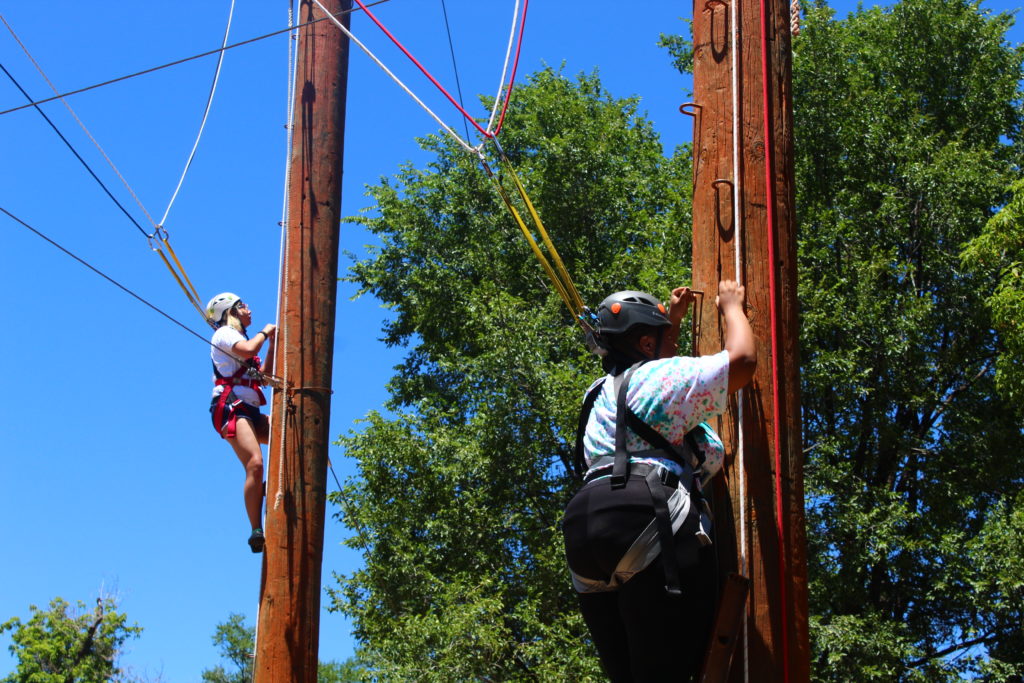
GSA Network has witnessed major legislative victories and devastating setbacks to the rights of trans and queer communities of color over the course of our organization’s history. But one aspect of our movement-building work has remained true despite this ever-changing political landscape: Liberation work has many faces and there is no one-size fits all approach to organizing for racial and gender justice.
In 2014, GSA Network launched a regional youth organizing strategy that aims to develop the next generation of trans and queer leaders of color and build the national GSA movement. Today, we’re excited to announce the launch of GSA Network Southwest based in Santa Fe, New Mexico! This represents an important and timely expansion of our work following more than a decade of relationship-building with local partners in both rural and urban communities across the Southwestern United States. GSA Network Southwest follows the launch of GSA Network Midwest in 2017 and GSA Network Southeast in 2014.
LuzMarina S., GSA Network’s Lead Organizer for the Southwest and West, talks about this exciting expansion:
Why is now a good time for GSA Network to focus on the Southwestern U.S.?
GSA Network has been trying to increase its presence in rural areas across the country, like it’s done in the Southeast. Working in the Southwest is the next step to bring to the forefront those voices that haven’t been part of the national narrative of what the GSA movement looks like. As we move into this region, we’re specifically thinking about border work and indigenous organizing that’s already happening locally—both of which are grounded in racial and gender justice and committed to dismantling white supremacy. Indigenous people living on occupied land have historically been engaged in that work out of necessity, and many of them identify as trans, queer, or Two Spirit, which has made GSA organizing a natural fit in their local, intersectional activism.
Why is it important to integrate more indigenous voices in trans and queer movement-building?
It’s important to really go back to our roots. Time and time again, activism in the Southwest gets co-opted by other folks, even though indigenous voices have been present in the region longer than a lot of us have. Bringing them to the table allows them to bring their perspective and offer moments of learning. I also think there’s a component of the Two Spirit community that gets left out of the LGBTQ+ conversation. Long before colonization and the erasure of their identities, many indigenous people embraced multiple genders. They are still challenging the gender binary that was imposed by colonizers and rooted in white supremacy and patriarchy. Indigenous young people, especially those who identify as Two Spirit, really need to see themselves reflected in this bigger movement in order to make their histories known and inform the collective fight for trans and queer liberation.
Trust-building is a big part of organizing in the Southwest. Tell us why.
There are a number of reasons. In those rural communities, there’s been a lot of distrust when outsiders come in. They often try to make changes without knowledge of how those communities operate, their history, the work that has been done already, and what results have been achieved. The people who live there know what’s best for their communities, but they are frequently ignored. Movement-building happens at a different pace in the Southwest, specifically. It has its own flavor— its own way of being, because organizing is linked to familial bonds, friendships, and deep community ties. Personal relationships form the core of this work, and those take time to build. In this part of the country, it’s about going at a pace that feels right at the moment. The work isn’t flashy. Organizers aren’t there for the glory or notoriety; they are there to make sure their respective communities are seen and heard.
How can trans and queer activists advance GSA organizing in the region? What specific themes or areas of interest are emphasized here?
Land justice and access to land are big conversations. For example, folks are thinking about oil drilling in Chapel Canyon. A lot of youth activists are talking about what it means to be out and part of their local communities. It’s common for LGBTQ+ youth across the country to seek acceptance and community in urban areas. Youth in the rural Southwest are unique in that many don’t want to leave. Since a lot of them stay, it makes sense for them to organize locally on their own behalf. They can start that work within a GSA. They can also contribute to the movement by participating in our national campaigns: GSA Day for Racial Justice and GSA Day for Gender Justice. Just as trans and queer organizing needs be intersectional and intentional about centering Black and Latinx people, GSA movement building needs to uplift indigenous communities that have been ravaged by white supremacy. By participating in GSA Day planning, young indigenous people in the Southwest can make sure they are represented in our larger racial and gender justice work.
Tell us about local organizations already creating change in the Southwest.
New Mexico GSA Network, run by the Mountain Center, works with young folks in the outdoors and has been one of our partners for nearly 15 years. Staff view nature as a teacher—particularly for people in marginalized communities that don’t get to be outside often. Another amazing partner is Tewa Women United, an organization of native women whose core work is reproductive justice grounded in Tewa knowledge. We’re working with their Youth Council in schools to help young folks be leaders in body sovereignty work. There’s also the Utah Pride Center, which offers counseling for youth and adults, as well as support programs for trans folks and people of color. We’re excited to follow the lead of local organizations like these and many others that are deeply established in their communities—and build with them. I’m excited to see how our collaborative work can shift the movement in the next few years.
Follow us on Twitter, Facebook, and Instagram to stay tuned to highlights of our youth organizing, movement-building, and leadership development work in the Southwest.
